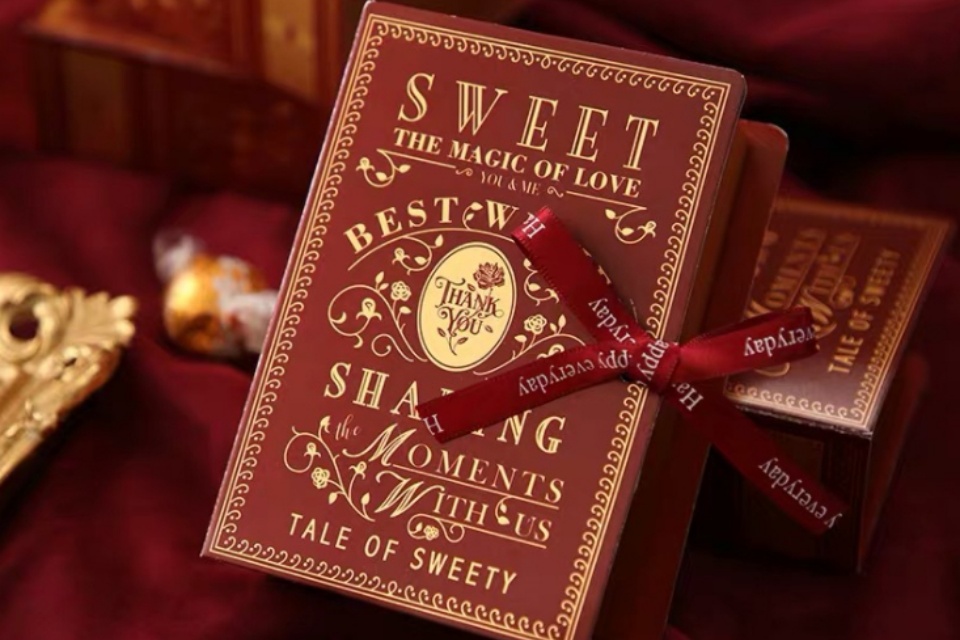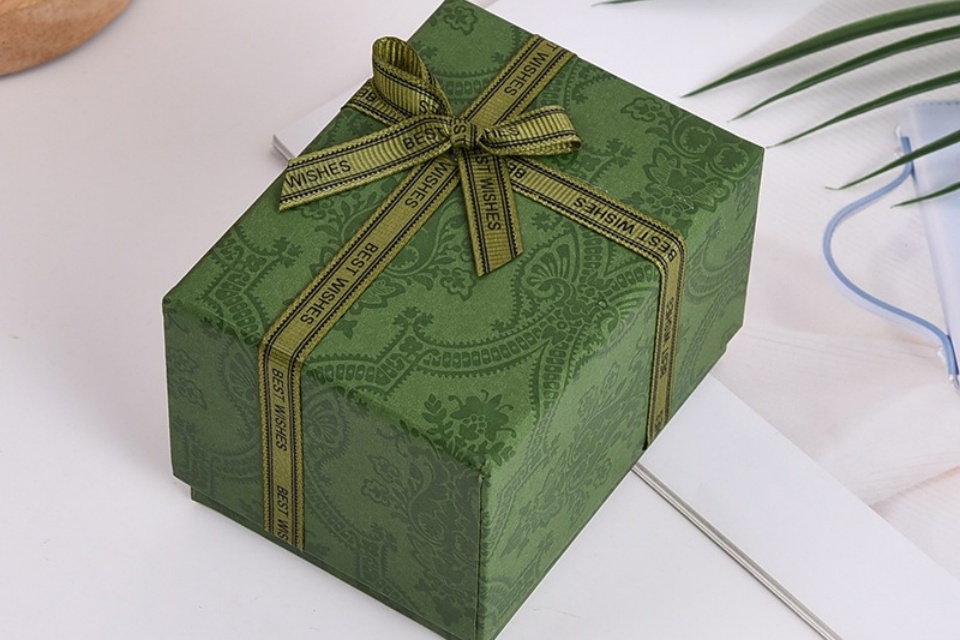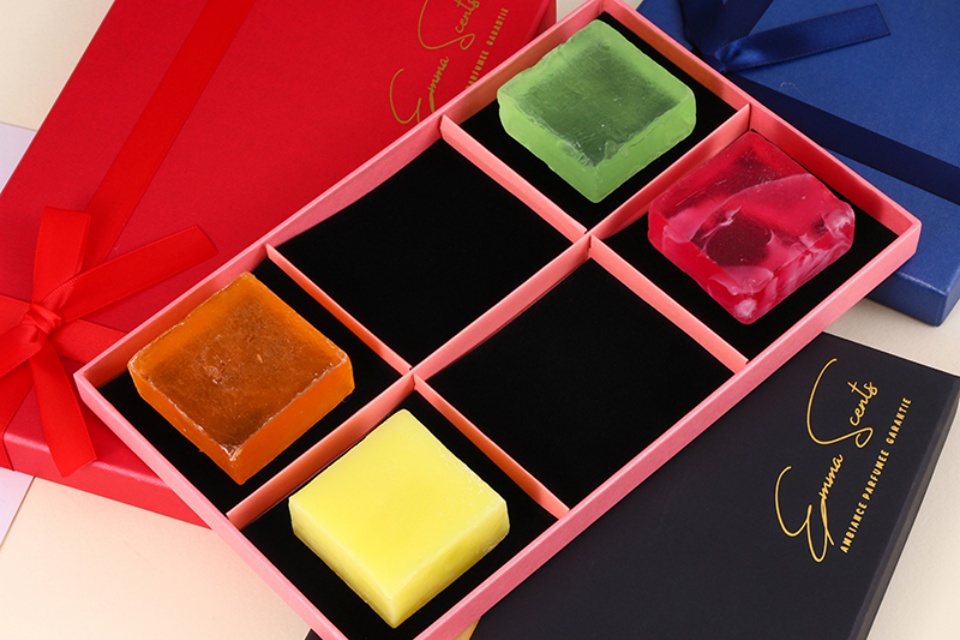Our News
Eco-Friendly Gift Wrapping And Packaging
Eco-Friendly Gift Wrapping And Packaging
Summary
Eco-friendly gift wrapping and packaging refer to sustainable practices that prioritize the use of environmentally friendly materials and techniques for wrapping gifts, aiming to reduce waste and minimize ecological impact. As awareness of environmental issues grows, eco-friendly wrapping has gained significant traction, reflecting a cultural shift towards sustainability in consumer habits. Traditional gift wrapping often involves non-biodegradable materials that contribute to waste; in contrast, eco-friendly alternatives emphasize recyclable, reusable, and compostable materials, aligning gift-giving with environmental responsibility.
Notably, eco-friendly gift wrapping techniques encompass a variety of approaches, such as using recyclable wrapping paper, fabric wraps inspired by the Japanese furoshiki method, and natural or upcycled decorations. These methods not only maintain the aesthetic appeal of gift presentation but also support a circular economy by encouraging the reuse of materials. The adoption of biodegradable adhesives and the mindful selection of sustainable materials further enhance the ecological benefits associated with this practice, positioning eco-friendly gift wrapping as both an artistic expression and a conscious choice for the environment.
Despite its growing popularity, the shift toward eco-friendly gift wrapping faces challenges, including limited access to sustainable materials, consumer awareness, and the balance between aesthetics and sustainability. The prevalence of synthetic materials like glitter and plastic in traditional gift wrapping raises concerns about their long-term environmental impact, necessitating a move towards greener options. Nonetheless, the movement promotes greater mindfulness in consumer behavior and encourages communities to engage in environmentally responsible gifting practices, fostering a cultural evolution towards sustainability in everyday life.
In addition to its ecological advantages, eco-friendly gift wrapping also provides economic and social benefits, reducing long-term costs associated with disposable wrapping and inspiring a collective shift towards greener consumption patterns. As brands increasingly embrace sustainable practices, eco-friendly gift wrapping continues to gain prominence, reflecting a growing commitment to environmental stewardship and cultural values associated with thoughtful gift-giving.
History
Gift wrapping has a rich history that spans thousands of years, with roots in both practical and ceremonial practices. The earliest evidence of gift wrapping can be traced back to ancient China during the Tang Dynasty (618–907 CE), where the act of enclosing gifts in decorative materials was both a cultural and social norm.
The tradition of gift giving was further popularized in the Western world, particularly after the publication of Charles Dickens' "A Christmas Carol" in 1843, which played a significant role in embedding seasonal gift-giving into popular culture.
The practice of wrapping gifts evolved significantly over the centuries. By the late 19th century, periodicals began to extensively cover the etiquette surrounding gift giving and wrapping. An 1898 article in The Puritan emphasized the importance of appealing presentation, stating, "In this day of pretty flowered boxes, ribbons and colored papers there is no excuse for a slouchy, ragged uninviting Christmas parcel". This shift towards aesthetic presentation indicated a growing emphasis on the appearance of gifts, which remains prevalent in modern gift-wrapping practices.
The materials used for wrapping have also evolved over time. Initially, wrapping materials were often made from cloth fibers rather than paper. The introduction of paper to the West was influenced by trade along the Silk Road, and the Moors played a significant role in bringing papermaking techniques to Europe, particularly through Spain. By the 8th century, the development of better writing paper by the Italians marked a turning point in the use of paper for wrapping purposes. The Fabriano company, noted as the world's oldest continuously-producing paper manufacturer, exemplifies this historical transition.
In Japan, the tradition of wrapping gifts took on unique cultural significance with the introduction of furoshiki, a versatile cloth used for wrapping various items. The term "furoshiki" emerged during the Edo period (1603–1868), where the cloth became synonymous with both functionality and artistry in gift presentation. The furoshiki patterns, which initially included motifs such as arabesques symbolizing prosperity, have continued to evolve into diverse designs today.
As societal norms and values changed, so did the methods and materials used for gift wrapping. In contemporary practices, there is a growing awareness of environmental sustainability, leading to a rise in eco-friendly gift wrapping techniques. This modern approach seeks to blend creativity with a reduced ecological footprint, countering the traditional culture of waste associated with gift wrapping.
Types of Eco-friendly Gift Wrapping
Eco-friendly gift wrapping encompasses a variety of techniques and materials that minimize environmental impact while still allowing for creativity and personalization. This section explores different types of eco-friendly wrapping options.
Recyclable Wrapping Materials
Recyclable wrapping paper is a popular choice for those who prefer traditional wrapping aesthetics. To ensure sustainability, select paper that is marked as recyclable, avoiding those with glitter or shiny finishes, as these materials often hinder recycling efforts. Additionally, when using recyclable wrapping paper, it's advisable to open gifts gently to enable reuse for future occasions.
Reusable Gift Wraps
Inspired by the Japanese tradition of furoshiki, fabric wraps provide a versatile and stylish option for eco-conscious gift-givers. These wraps can be made from various materials, such as organic cotton or recycled fabric, and can be reused multiple times, making them an environmentally friendly alternative. Additionally, these fabric wraps can double as part of the gift, such as a beautiful scarf or tea towel.
Natural and Upcycled Materials
Natural elements like twine, burlap, and dried flowers can enhance the rustic charm of gift wrapping. Wrap gifts in plain recycled paper, and secure them with twine, incorporating elements like pine cones or sprigs of holly for decoration. Similarly, repurposed materials, such as newspapers, brown paper bags, or old maps, can be creatively transformed into wrapping paper, showcasing both sustainability and creativity.
Compostable Wrapping Materials
For a truly zero-waste option, consider wrapping gifts in compostable materials like kraft paper or jute. These materials break down naturally and can be adorned with biodegradable decorations, further reducing the carbon footprint of gift-giving.
Creative Decoration Techniques
To personalize and elevate the aesthetic of eco-friendly gift wrapping, various decoration techniques can be employed. Stamped designs on plain brown or recycled paper add a unique flair and showcase the giver's creativity. Instead of traditional bows, using natural decorations such as cinnamon sticks or dried flowers not only beautifies the wrapping but also aligns with eco-friendly principles.
Store-Bought Eco-Friendly Options
For those who prefer convenience, several brands offer eco-friendly, store-bought wrapping options. These may include recyclable wrapping paper made from sustainable materials, as well as reusable gift bags crafted from organic cotton or hemp. Many of these products are designed to be used multiple times, marrying practicality with sustainability. Through the use of these various eco-friendly wrapping options, individuals can reduce waste while still presenting beautifully wrapped gifts that reflect their values and creativity.
Techniques for Eco-friendly Gift Wrapping
Eco-friendly gift wrapping techniques focus on reducing waste, using sustainable materials, and adding a personal touch to gifts. This section explores various methods that not only make your gifts look beautiful but also help protect the environment.
Sustainable Materials
One of the most effective techniques for eco-friendly wrapping is selecting sustainable materials.
- Recycled or Upcycled Materials: Using items such as fabric, paper bags, or old newspapers is a great way to minimize waste and add character to your gifts. Repurposing old newspapers can be particularly stylish, allowing for a personal touch by choosing sections that resonate with the recipient.
- Brown Craft Paper: This recyclable option can serve as a blank canvas for creativity, where you can add personal notes or drawings. Its rustic elegance makes it a popular choice for environmentally conscious gift-givers.
Creative Wrapping Techniques
Incorporating creative wrapping techniques can enhance the sustainability of your gifts.
- Furoshiki: This traditional Japanese method uses a square piece of fabric to wrap gifts, allowing for various styles and sizes. The fabric can be reused, transforming into other items such as scarves or tote bags, which promotes sustainability through upcycling.
- Natural Decorations: Instead of synthetic embellishments, consider using natural items such as dried flowers, leaves, or twine. These not only reduce waste but also add an organic aesthetic to your wrapping.
Mindful Use of Adhesives
Many common wrapping materials can contribute to non-recyclability.
- Biodegradable Tapes: Transitioning from plastic-based adhesives to biodegradable or paper-based alternatives can significantly reduce environmental impact. Biodegradable options, such as washi tape, come in various designs and are often more visually appealing than traditional plastic tape.
- Homemade Glue: For those looking to go a step further, making your own bio-based glue using simple ingredients like wheat flour and water can be a fun and sustainable choice.
Emphasis on Experiences
Finally, opting for gifts that do not require traditional wrapping can also contribute to a more sustainable approach. Consider giving experiences or homemade gifts that can be presented without the need for packaging, further reducing waste. By adopting these techniques, individuals can enjoy the festive spirit of gift-giving while minimizing their ecological footprint, demonstrating that thoughtful choices can benefit both the recipient and the planet.
Benefits of Eco-friendly Gift Wrapping
Eco-friendly gift wrapping presents numerous advantages that benefit individuals, communities, and the environment alike.
Environmental Benefits
Choosing sustainable wrapping methods can significantly reduce waste and minimize the carbon footprint associated with traditional gift wrapping practices. Many common wrapping materials, such as glossy paper and plastic ribbons, are non-biodegradable and contribute to landfill overflow. In contrast, eco-friendly options, such as fabric, recycled paper, and upcycled materials, not only lessen environmental impact but also promote a circular economy by encouraging the reuse of materials. Additionally, opting for natural decorations like dried flowers or leaves reduces reliance on synthetic embellishments, which often end up polluting the environment.
Economic Advantages
Sustainable gift wrapping can also yield economic benefits over time. While the initial cost of eco-friendly materials may be higher, reusable options—like fabric wraps and boxes—can lead to savings in the long run as they eliminate the need for continual purchases of single-use wrapping supplies. Furthermore, reducing waste translates into lower disposal costs for communities, alleviating the financial burden associated with waste management.
Community Impact
Embracing eco-friendly wrapping practices sets a positive example within communities and inspires others to adopt sustainable habits. The movement towards greener gift-giving fosters a culture of mindfulness about consumption and waste, encouraging individuals to consider the environmental impact of their choices. By promoting sustainable gift wrapping, individuals can contribute to a broader shift towards environmental responsibility that can lead to collective action within their communities.
Psychological and Emotional Benefits
There is a sense of satisfaction and accomplishment that comes from using sustainable materials to wrap gifts. The act of consciously selecting eco-friendly options allows gift-givers to feel more connected to their values and the planet, turning the gift-wrapping process into a meaningful experience. Moreover, handmade and personalized wrapping adds a unique touch to gifts, enhancing the emotional significance for both the giver and the recipient.
Challenges and Considerations
The transition to eco-friendly gift wrapping and packaging presents several challenges and considerations for consumers, manufacturers, and the environment. While there is a growing demand for sustainable materials, significant barriers remain that hinder the widespread adoption of these practices.
Material Limitations
One of the primary challenges in adopting eco-friendly wrapping materials is the limited availability of sustainable alternatives. Although paper is often viewed as a suitable replacement for plastic, not all paper products are created equal. Coated papers and those containing additives can complicate recycling processes, making it difficult for consumers to identify truly sustainable options. Additionally, materials like polylactic acid (PLA) have been suggested as alternatives, but their higher costs and recyclability limitations pose challenges for both manufacturers and consumers.
Consumer Awareness and Mindset
Consumer behavior plays a crucial role in the success of sustainable packaging initiatives. There is a pressing need for greater awareness and education about the environmental impact of various materials. Many consumers still opt for convenience and price over sustainability, leading to the continued use of traditional, non-recyclable materials. Shifting this mindset requires targeted campaigns that emphasize the importance of eco-friendly choices and provide practical alternatives, such as secondhand or homemade wrapping.
Regulatory and Economic Pressures
Regulatory changes are slowly pushing the gift-wrapping industry towards more sustainable practices. Many countries have begun enacting laws to promote eco-friendly packaging, which may increase costs for manufacturers who need to adapt their production methods. However, these regulations could also incentivize innovation in sustainable packaging solutions, ultimately benefiting both the environment and businesses.
Environmental Impact of Microplastics
The use of certain materials in gift wrapping, such as glitter and plastics, poses significant environmental risks. Glitter, composed of microplastics, can easily enter ecosystems and harm marine life. The concern extends to human health, as microplastics have been detected in various food sources and even in the placenta of unborn children. This emphasizes the need for stricter controls on materials used in packaging and a greater focus on biodegradable and compostable options.
Balancing Aesthetics and Sustainability
Consumers often seek visually appealing gift wrapping, which can lead to a reliance on non-eco-friendly options. Balancing the desire for attractive packaging with sustainable practices presents a challenge for designers and brands alike. Innovative solutions that maintain aesthetic appeal while utilizing sustainable materials are crucial for meeting consumer expectations without compromising environmental goals.
Cultural Influences on Eco-friendly Gift Wrapping
Traditional Practices and Symbolism
Cultural practices play a significant role in shaping the methods and materials used in gift wrapping, often reflecting deep-rooted traditions and symbolism. For instance, in many Middle Eastern cultures, the act of gift-giving is intertwined with the principles of hospitality and generosity, where luxurious materials like silk and satin are commonly employed to wrap gifts, elevating their perceived value. Such wrapping not only serves a practical purpose but also conveys respect towards the recipient.
In Asian cultures, the choice of wrapping colors can carry symbolic meanings. For example, red is often used in Chinese gift wrapping as it signifies prosperity and good fortune, whereas white is avoided due to its associations with mourning. Similarly, in Japan, gifts are typically wrapped in even numbers, as odd numbers are linked to funerals, thereby reflecting the cultural significance attached to the practice of wrapping itself.
Modern Adaptations
As global influences intermingle with traditional customs, modern adaptations of gift wrapping have emerged, emphasizing eco-friendliness. In many cultures, there is a growing awareness and preference for sustainable materials, such as recycled paper and biodegradable fabrics, which align with contemporary values of environmental responsibility. This shift not only preserves traditional aesthetics but also contributes to a more sustainable future.
For instance, the Japanese art of furoshiki, which involves wrapping gifts in reusable cloth, has gained popularity worldwide as an eco-friendly alternative to conventional wrapping paper. This practice is not only resourceful but also honors the cultural importance of craftsmanship and the value of reusing materials.
Cultural Exchange and Global Influences
The globalization of gift-giving traditions has also led to the exchange of eco-friendly wrapping techniques across different cultures. Many Western consumers are now adopting practices that prioritize sustainability, inspired by traditional methods from various cultures. This cultural exchange enriches the gift-wrapping landscape, allowing for a fusion of styles that are both aesthetically pleasing and environmentally conscious.
For example, brands such as Rural Handmade focus on bespoke sustainable fashion that incorporates eco-friendly packaging as a means to celebrate cultural diversity while promoting responsible consumerism. As consumers increasingly demand brands to reflect their values, businesses are adapting by implementing sustainable practices that honor traditional influences in their gift-wrapping methods.
Categories
Latest News
Contact Us
Contact: Aaron Lee
Phone: +8613570866244
Tel: +8675529490260
Add: Li Songlang 2nd Industrial Zone,No.18,FengTang Rd,Guangming New District


